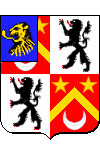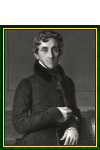Count of the French Empire
Pronunciation:

Louis Mathieu Molé was born on January 24, 1781 in Paris, the son of a President of the Parliament of Paris who would be guillotined during the Terror.
He emigrated during the French Revolution, then returned to France in 1796.
He started as a writer in 1805.
His "Essais de morale et de politique", making an eulogy for the Empire, earned him a place of auditor of the Council of State in February 1806, then of master of requests in June. He became prefect in November of that year, State Councillor, Count of the Empire and General Manager of Civil Engineering in 1809.
Hated by his subordinates for his arrogance and his ignorance in the technical field, Mole owed his career to the favor of the Emperor, to whom he showed himself devoted.
In June 1813 he was appointed Minister of Justice, despite his utter incompetence in law - but after a dithyrambic eulogy of Napoleon delivered to the Parliament.
He was sidelined during the first Restoration, but avoided to be too much compromised during the Hundred Days. He refused the Departments that Napoleon offered him (Justice, Interior and Foreign Affairs); he was satisfied with the direction of Civil Engineering. He was appointed member of the Peerage on June 2nd, 1815, but a timely treatment prevented him from sitting at the Chamber.
After the return of King Louis XVIII, he sent him the assurance of his "unalterable fidelity" and resumed his place in the Council of State.
His constant servility to all the powers, a family tradition, gave him a long and distinguished career, that ended paradoxically with a protest against the coup of December 2, 1851.
Louis Mathieu Molé died in the family castle of Champlâtreux in Epinay, in Seine-et-Oise (Val d'Oise today) on November 23, 1855. He was buried in the little church of the village.
"Count Mathieu-Louis Molé" painted in 1834 by Jean Auguste Dominique Ingres (Montauban 1780 - Paris 1867).

Other portraits

Enlarge
"Count Mathieu-Louis Molé". Engraving by Luigi Calamatta (Civitavecchia 1802 - Milan 1869) after the portrait by Jean Auguste Dominique Ingres.